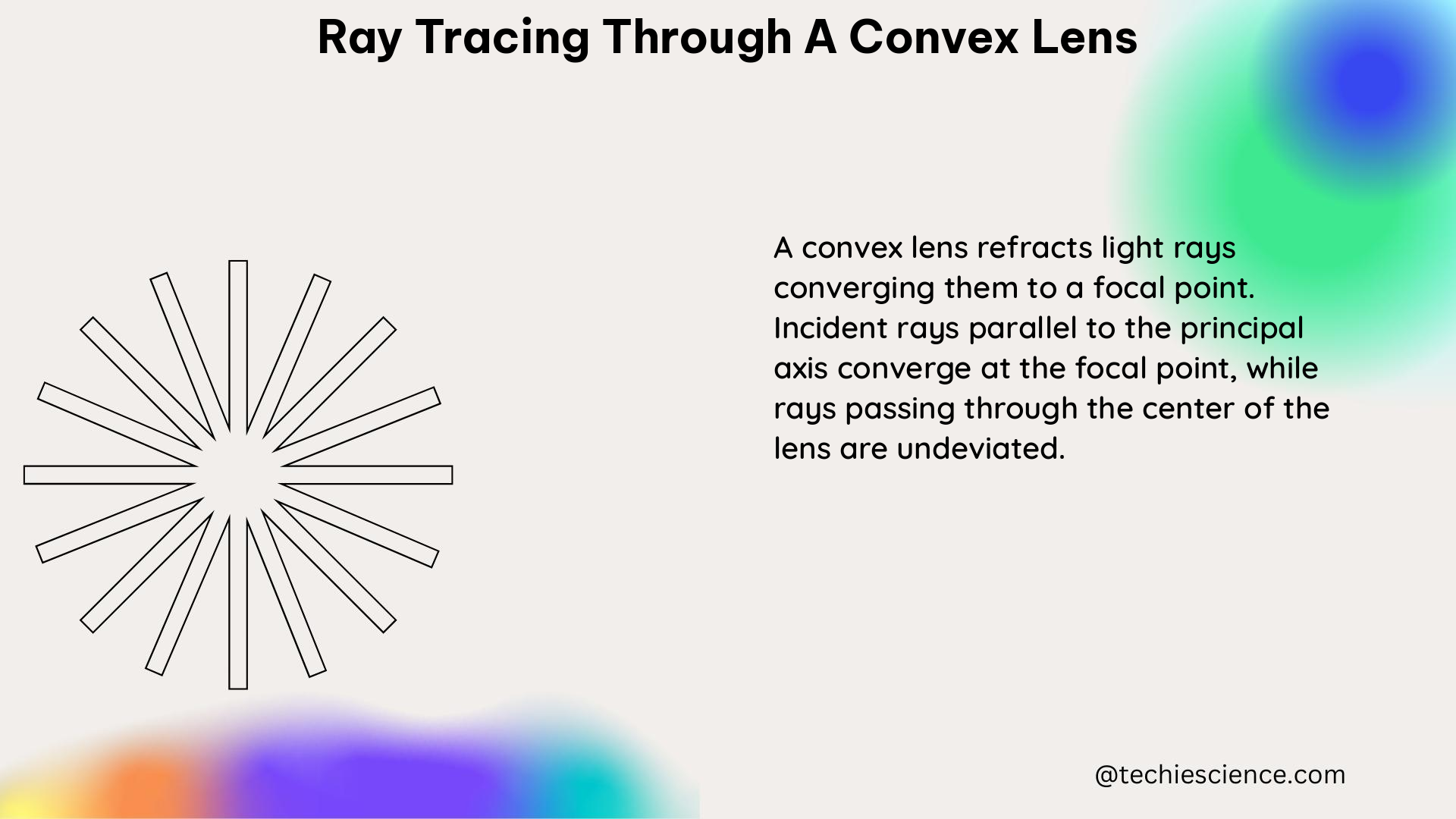Ray tracing through a convex lens is a fundamental concept in optics that allows us to understand the formation and properties of images created by converging lenses. This process involves determining the paths of light rays as they pass through a convex lens, enabling us to locate the image and analyze its characteristics, such as size, orientation, and type (real or virtual).
Understanding the Thin Lens Equation
The thin lens equation is a crucial tool in ray tracing through a convex lens. This equation relates the object distance (do), image distance (di), and the focal length (f) of the lens:
1/f = 1/di + 1/do
This equation allows us to calculate the image distance when the object distance and focal length are known.
Example: Calculating Image Distance
Consider an object placed 20 cm in front of a convex lens with a focal length of 10 cm. We can use the thin lens equation to calculate the image distance:
1/f = 1/di + 1/do
1/10 = 1/di + 1/20
di = 10 cm
In this case, the image is formed 10 cm in front of the lens.
Numerical Problem: Determining Image Distance and Type
An object is placed 30 cm in front of a convex lens with a focal length of 15 cm. Calculate the image distance and determine whether the image is real or virtual.
1/f = 1/di + 1/do
1/15 = 1/di + 1/30
di = 30 cm
Since the image distance is positive, the image is real.
Tracing the Primary Rays

Ray tracing through a convex lens involves tracing the paths of light rays as they pass through the lens. Three primary rays are used for this process:
- Ray Parallel to the Principal Axis: This ray passes through the focal point on the other side of the lens after refraction.
- Ray Passing Through the Center of the Lens: This ray continues in a straight line without any deviation.
- Ray Passing Through the Focal Point: This ray becomes parallel to the principal axis after refraction.
The point where these rays intersect on the other side of the lens is the location of the image.
Image Formation and Properties
The process of ray tracing allows us to determine the properties of the image formed by a convex lens, including its size, orientation, and type (real or virtual).
Image Size and Orientation
The size and orientation of the image depend on the object distance and the focal length of the lens. When the object is placed closer to the lens than the focal length, the image is real, inverted, and smaller than the object. Conversely, when the object is placed beyond the focal length, the image is real, inverted, and larger than the object.
Real vs. Virtual Images
The type of image (real or virtual) is determined by the image distance. If the image distance is positive, the image is real and can be projected onto a screen. If the image distance is negative, the image is virtual and cannot be projected onto a screen.
Advanced Concepts in Ray Tracing
Beyond the basic principles of ray tracing through a convex lens, there are several advanced concepts that can be explored:
- Magnification: The magnification of a lens is the ratio of the image size to the object size. The magnification formula is given by: M = -di/do.
- Aberrations: Lens aberrations, such as spherical aberration, chromatic aberration, and coma, can affect the quality of the image formed by a convex lens. These aberrations can be minimized through lens design and the use of compound lenses.
- Lens Combinations: When multiple lenses are used in combination, the overall optical system can be analyzed using the principles of ray tracing. This is particularly important in the design of complex optical instruments, such as telescopes and microscopes.
- Optical Instruments: The concepts of ray tracing through a convex lens are fundamental to the understanding and design of various optical instruments, including cameras, projectors, and eyeglasses.
Conclusion
Ray tracing through a convex lens is a powerful tool for understanding the formation and properties of images created by converging lenses. By applying the thin lens equation and tracing the paths of light rays, we can determine the location, size, orientation, and type of the image. This knowledge is essential for the design and analysis of various optical systems and instruments.
References

The lambdageeks.com Core SME Team is a group of experienced subject matter experts from diverse scientific and technical fields including Physics, Chemistry, Technology,Electronics & Electrical Engineering, Automotive, Mechanical Engineering. Our team collaborates to create high-quality, well-researched articles on a wide range of science and technology topics for the lambdageeks.com website.
All Our Senior SME are having more than 7 Years of experience in the respective fields . They are either Working Industry Professionals or assocaited With different Universities. Refer Our Authors Page to get to know About our Core SMEs.